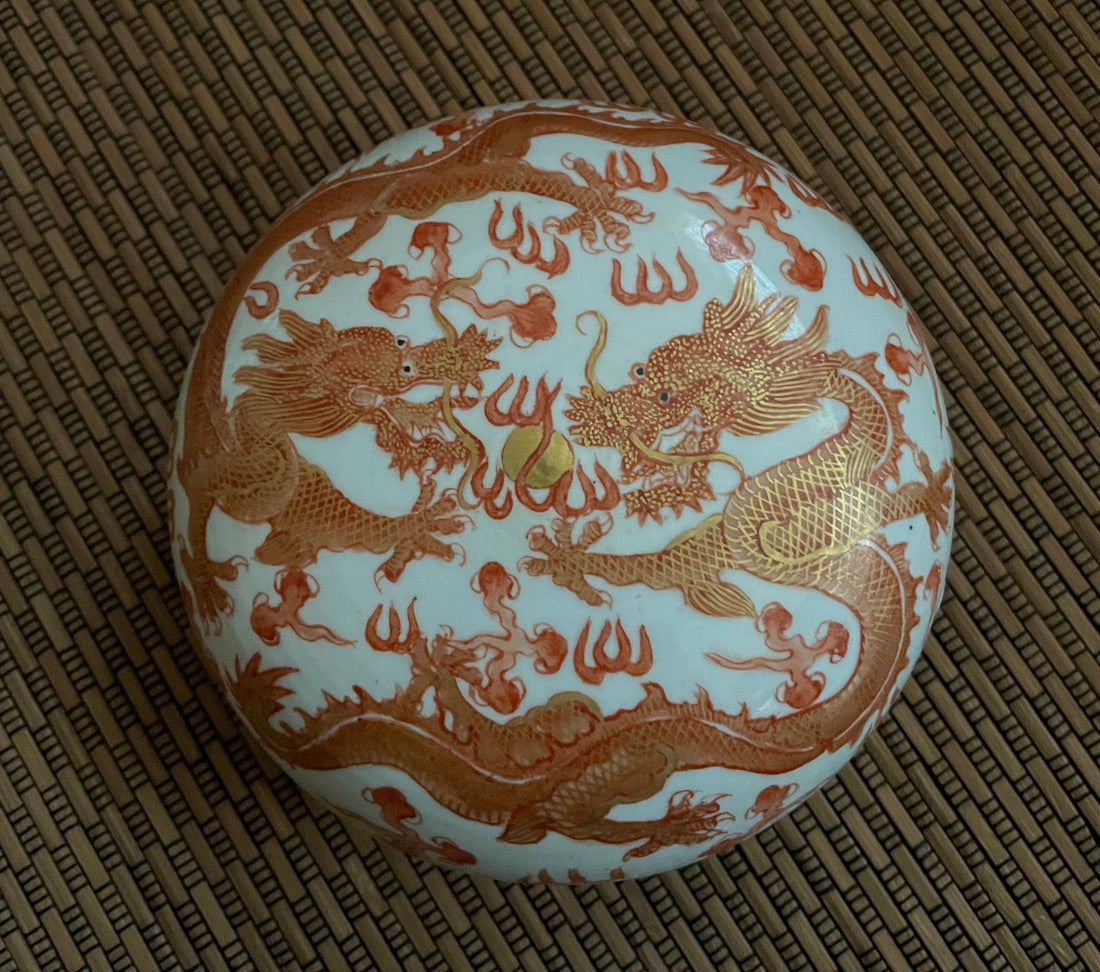Fire and Authority: The Imperial Dragon on Rouge de Fer Porcelain

Share
Among the most powerful and enduring motifs in Chinese art, the dragon (龙, lóng) occupies a central place as a symbol of power, cosmic order, and imperial sovereignty. In this finely decorated porcelain box rendered in vibrant rouge de fer (iron red) the dragon is not merely a decorative element. It is a profound statement of identity, belief, and political transition.
The Dragon Motif: A Symbol of Heaven and Empire
For millennia, the dragon in Chinese culture has represented yang energy, celestial forces, and benevolent power. Unlike the fire-breathing monsters of the West, Chinese dragons are water deities associated with rain, fertility, and seasonal renewal.
By the Ming and Qing dynasties, the dragon had become the exclusive emblem of the emperor, especially the five-clawed dragon seen here. This elite creature, coiled in dynamic motion around a flaming pearl, was reserved for imperial use its claws symbolizing command over the Five Blessings and Five Directions of the universe.
Rouge de Fer: Fire as Color and Concept
This lidded box, painted in the bold red enamel known as rouge de fer, captures the vitality of the dragon through both form and color. Introduced to Chinese porcelain decoration in the Kangxi era, this iron oxide pigment was favored for its association with strength, auspiciousness, and imperial dignity.

Here, the dragons twist and leap among stylized flames, each chasing a central pearl of wisdom or cosmic truth. Their gaze is fierce, their claws outstretched, their bodies full of kinetic energy a visual metaphor for vigilance, sovereignty, and supernatural control.
Guangxu Mark, Early Republic Craftsmanship
The base of this box bears a six-character Guangxu reign mark (1875–1908), but stylistic details suggest it was likely produced during the Early Republic period (circa 1912–1930). This transitional moment in Chinese history saw artisans continue imperial traditions even as dynastic rule had formally ended.

Porcelain workshops especially in Jingdezhen produced wares that preserved Qing iconography for collectors, scholars, and nostalgic elites, often under the guise of earlier reign marks. This was not mere forgery but a cultural statement: a desire to sustain imperial aesthetic values in a radically shifting political climate.
A Dragon Between Two Worlds
In this box, we see a dragon caught between two realms: the ancient and the modern, the imperial and the republican. While emperors were gone, the aura of imperial symbolism still carried weight, especially for the emerging cultural elite of the early 20th century, who sought to anchor their identity in China’s dynastic past.
Collecting and creating such objects became a means of cultural continuity. The dragon, once confined to palaces, now lived in scholar’s studios and private salons no longer the exclusive property of the emperor, but still a powerful guardian of Chinese tradition.
Conclusion: An Object of Power, Then and Now
Whether created under the last breath of the Qing dynasty or in the echoing silence of its collapse, this rouge de fer box testifies to the dragon’s lasting hold over Chinese imagination. It is both an aesthetic triumph and a cultural relic, bridging centuries of imperial grandeur and modern identity.
As we admire its vivid brushwork and symbolic resonance, we’re reminded that the dragon still soars—no longer bound to the throne, but immortal on porcelain.
